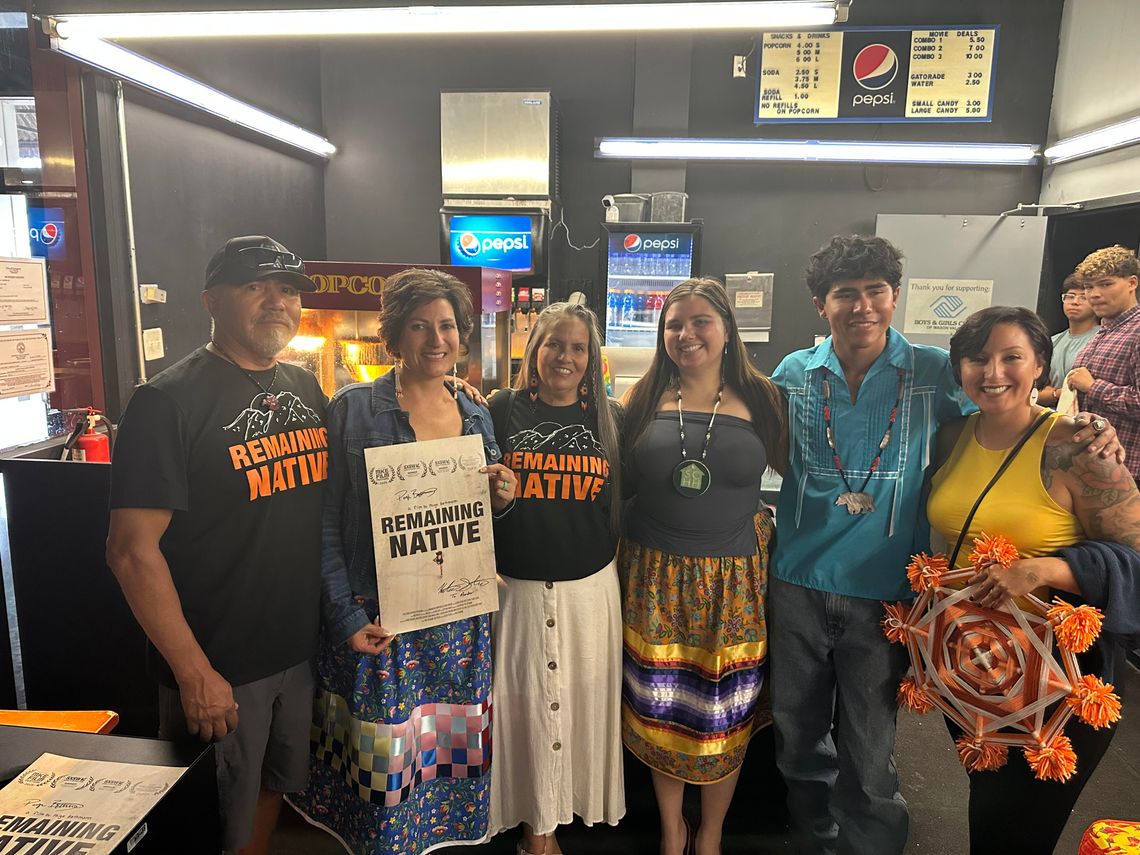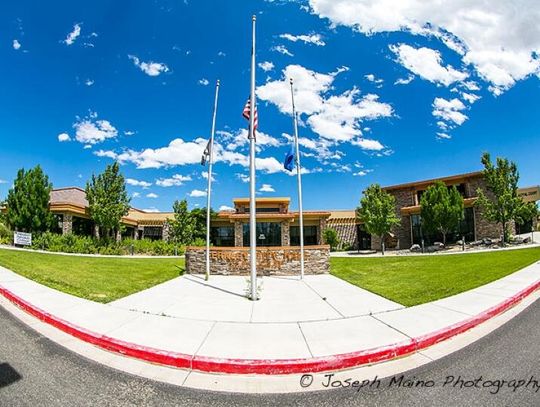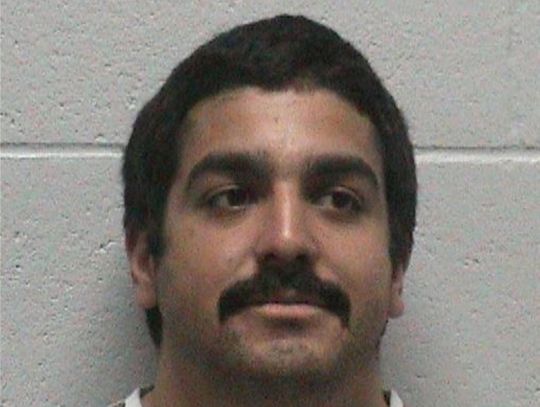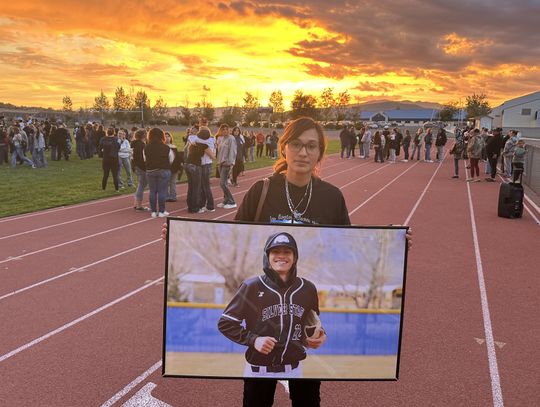Early in the film “Remaining Native,” as the screen shows him running through the desert
outside of Yerington, the voice of Ku Stevens is heard narrating what he thinks about while he’s
running.
“Mostly,” he said, “I think about running for my life.”
That’s because that’s exactly what his great-grandfather, Frank Quinn, once did. At the age of 8,
after being forcibly removed from his parents and his home on the Yerington Paiute Reservation in the late 1900s,
Quinn ran away three times from the Stewart Indian School in Carson City. The first two times,
Quinn was caught and brought back to the boarding school, but on his third try, he ran 50 miles
through the desert and the hills back to his home.
Running has never been just a sport for Stevens, who spent the past two years at the University
of Oregon and has transferred for the upcoming year to Washington State University. Stevens
won the 2A state cross country championship as a senior at Yerington High School in 2021,
beating the time of the 5A state champion, Nathan Carlin, of Foothill High School in Las Vegas,
by one second, making him the fastest cross country runner in the state.
His journey and achievements have been captured in the documentary “Remaining Native,”
which was shown in two free public screenings last weekend at the Yerington Movie House. The
documentary weaves the parallel stories of Stevens’ pursuit of a state championship and a
college scholarship to run at the University of Oregon with the Remembrance Run he created to
honor and bring awareness to the plight of Quinn and Native American children all over the
country who were forcibly removed from their homes and placed in boarding schools in attempts
to assimilate them.
Stevens first learned of his great-grandfather's harrowing story at age 11 when he played in a
basketball tournament at Stewart. As he grew, so did his understanding of the history and trauma
tied to boarding schools and the generational wounds they left.
Stevens was already an avid runner, but hearing Quinn’s story lit a fire inside him to honor that
legacy and shape his own.
Stevens organized the first Remembrance Run in 2021, from the Stewart Indian School to the
Yerington Paiute Reservation. “Remaining Native” documents the second Remembrance Run in
2022, this time in the opposite direction from Yerington to Stewart, with runners bringing
offerings from the tribe to the graves at Stewart.
The film shows the runners visiting a cemetery near the school.
“What kind of school has a cemetery?” one of them asks.
It’s a question none of them, or anyone else, can answer. But it’s a question that Stevens hopes
the film will shine a light on and help people recognize the trauma that was inflicted on
generations of Native Americans.
“You learn so much history in 88 minutes,” he said. “All that history took my life to learn. The
fact that it can be balled up into something that is tangible, easily understandable and hopefully
accessible when we get distribution, for the future generations they’ll be able to learn the weight
and where that weight comes from with being Native American in relation to generational
trauma.”
The film has appeared in 16 festivals and won several awards. Stevens said they hope to sell
distribution rights to ESPN, Hulu and Disney+. But for Stevens, filmmaking was a purposeful
accident.
Filmmaker Paige Bethmann, a Haudenosaunee woman (Mohawk/Oneida) contacted Stevens
after reading the story about the Remembrance Run and pitched the idea of making a
documentary about it. Stevens didn’t hesitate to agree.
“I never had a need or a want for fame, but my aspirations have warranted it,” he said. “I have a
pretty good way about things and seeing if they’ll benefit me in the long run, or if they’ll benefit
the community in the long run.”
Throughout the film, Stevens discusses his dream of running for the University of Oregon. But
when he got to Oregon, he found out that even when dreams come true, they aren’t always what
you imagined.
The coach who recruited Stevens was fired soon after he got there and he never hit it off with the
new coach.
“It was a lot of glitz and glamour. It could’ve been a better experience,” he said. “But I made
lifelong friends.”
After two years at Oregon, Stevens is transferring this fall to Washington State—his second pick
out of high school. He’s aiming high in his next chapter: to become an All-American in cross
country—placing among the nation’s top 30 runners. Depending on the course, Stevens said he
expects to need a time in the range of 28 minutes, 20 seconds in the 10K to have a chance. In his
sophomore year, he clocked 29:20 in the 10K, a minute off his target time, which parallels his
effort in the film to run the 3200 meters in less than 9 minutes in order to earn the interest of the
Oregon coaches.
“It’s doable,” he said. “That’s not much in 10K,”
Stevens is majoring in fine arts and recently completed his minor in anthropology. His dream is
to design clothing, and he’s coordinating community outreach for Nike’s Native-focused N7
division. And while he will always feel the ties to his homeland and his community, he believes
he can do more to help them from afar.
“I want to do that nationally or at a state level to begin with, and then eventually get into politics,
and start getting into the pen and paper of things, because that’s where real, concrete changes
are.”
As lofty as his aspirations may be, living up to his own name may be the toughest challenge he
faces. Stevens’ given name is Kutoven, which he said means “Bringing the light from the dark.”
In the film, he says he doesn’t believe he has earned his name yet, but he said making the film is
a step toward that goal.
“I like to relate it back to a quote that is like, ‘We’re always chasing the person we want to be 10
years down the line,’” he said. “Realistically, we’re never going to be that person, but it gives me
something to stive for.”
His aspirations are lofty, but Stevens takes them one mile at a time. “Anything I’ve ever set out
to achieve, I’ve achieved,” he said. “I’m just going to continue putting myself in those situations
where I can achieve.”










Comment
Comments